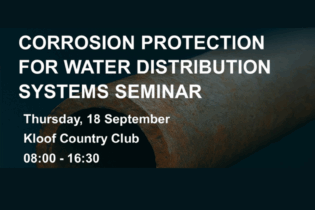We’re a thirsty species. Humans can’t survive without fresh, clean, drinking water, yet we sprang to life on a planet where 97.5% of water is useless to us.
What’s left for us to drink is becoming more and more polluted by agriculture, industry and poor water-management. By 2030, 3.9 billion people (47% of the predicted population) won’t have access to clean water. There is a tiny solution to this large problem: nanomaterials can strip water of toxic metals and dangerous organic molecules, or turn salt water into fresh water. There are also plenty of other nanotech solutions in development. “Nanotechnologies that have the best chance are ones we can integrate into existing systems,” says Mamadou Diallo, an environmental engineer at the California Institute of Technology. That means, for example, membranes enhanced with nanoparticles that can slot seamlessly into water treatment plants. The Nametech project, which is co-funded by the European Commission and the University of Applied Sciences Northwestern Switzerland, is enhancing filters already used in water treatment plants with nanoparticles that do specific jobs. “We’re adding a wide range of nanoparticles,” says project manager Thomas Wintgens of the University of Applied Sciences Northwestern Switzerland in Muttenz. These include: • Biomagentite, an iron mineral, to get rid of chlorinated organic molecules and some toxic metals. • Silver to kill bacteria. • Nanoparticles of titanium dioxide to break down common organic contaminants such as hormones, pharmaceuticals, or manure – all they need to operate is some light to shine on them when they are in the water. • Titanium dioxide, which is already widely used in paints and sunscreens so, in principle, the technology is cheap. Nametech is running a small pilot plant to test the membranes. Each 20cm module can process around a cubic metre of water every hour. But, like other new technologies, it needs to be proven beyond the lab. Rob Lammertink of the University of Twente, the Netherlands, says there is interest from industry for nanotechnology water treatments, but it is still early days. He heads the nanotechnology in water group of a large consortium, NanoNextNL, and predicts that, perhaps in five or 10 years, nanotech water treatments might be used on a large scale. Other scientists have put the conservatism of the water industry aside, and are thinking smaller to make sure people don’t go thirsty. In South Africa, the humble teabag has inspired a way to clean water 1 litre at a time. In the mouth of an ordinary drinking bottle sits a teabag-like net that is a nanotech marvel.Developed by Eugene Cloete at Stellenbosch University in South Africa, the inside of the biodegradable teabag is coated with thin water-soluble polymer nanofibres that have been impregnated with anti-microbial agents and spun into a fine mesh.
The material filters out most contaminants – up to 99.99% of bacteria. The “tea leaves” inside the bag are activated carbon, which can suck out heavy metals and other contaminants. As yet the tea bag remains a prototype, the final version, intended for consumers, is still being developed by the company AquaQure. But there is already much hope that this filter could make a big difference to the lives of people who do not have easy access to clean water. Cleaning up dirty water isn’t the only way to quench the world’s thirst. Diallo says that producing fresh water out of the world’s plentiful supply of salty water, a process called desalination, will be made more efficient and cost effective with nanotechnology. It could be of huge benefit in countries such as his native Senegal, where over-exploitation of groundwater means that ever-deeper aquifers need to be drilled. Deeper aquifers invariably lead to more brackish water. Desalination is expensive and needs lots of energy. Reverse osmosis, the favoured current technology, uses high pressures to pump contaminated water across a membrane. “At the moment we extract clean water from seawater – we need to extract the salt instead,” says Diallo. “We can’t do this without advanced nanomaterials.” Water produced from the world’s cheapest desalination plants cost about 31p a cubic metre at the moment. But things could be cheaper. Put two metal plates into salty water, for example, and apply a voltage across them, and the salt will start to separate from the liquid. The positively-charged half of the salt molecules (known as ions) gets attracted to the negatively-charged metal plate and vice versa. Coat the metal plates with nanomaterials and cycle the voltage across them, and the salt ions can be collected and removed relatively efficiently. Nano-engineered carbon and carbon nanotubes are being examined as candidates, with the potential to cut desalination costs by 75%. Diallo says that a capacitance device such as the one described above is at least 10 years away from being available on an industrial scale. But more decentralised water treatment might allow nanotechnology to play a bigger role, in the developing world, for example, where large-scale water distribution centres and networks of pipes do not already exist. Nanotech desalination and treatment devices could go straight to point of use, or be used in small-scale or emergency situations. “Maybe nanotechnology will level the playing field,” says Diallo, and give everyone a clean glass of water to drink. Source: guardian.co.uk







